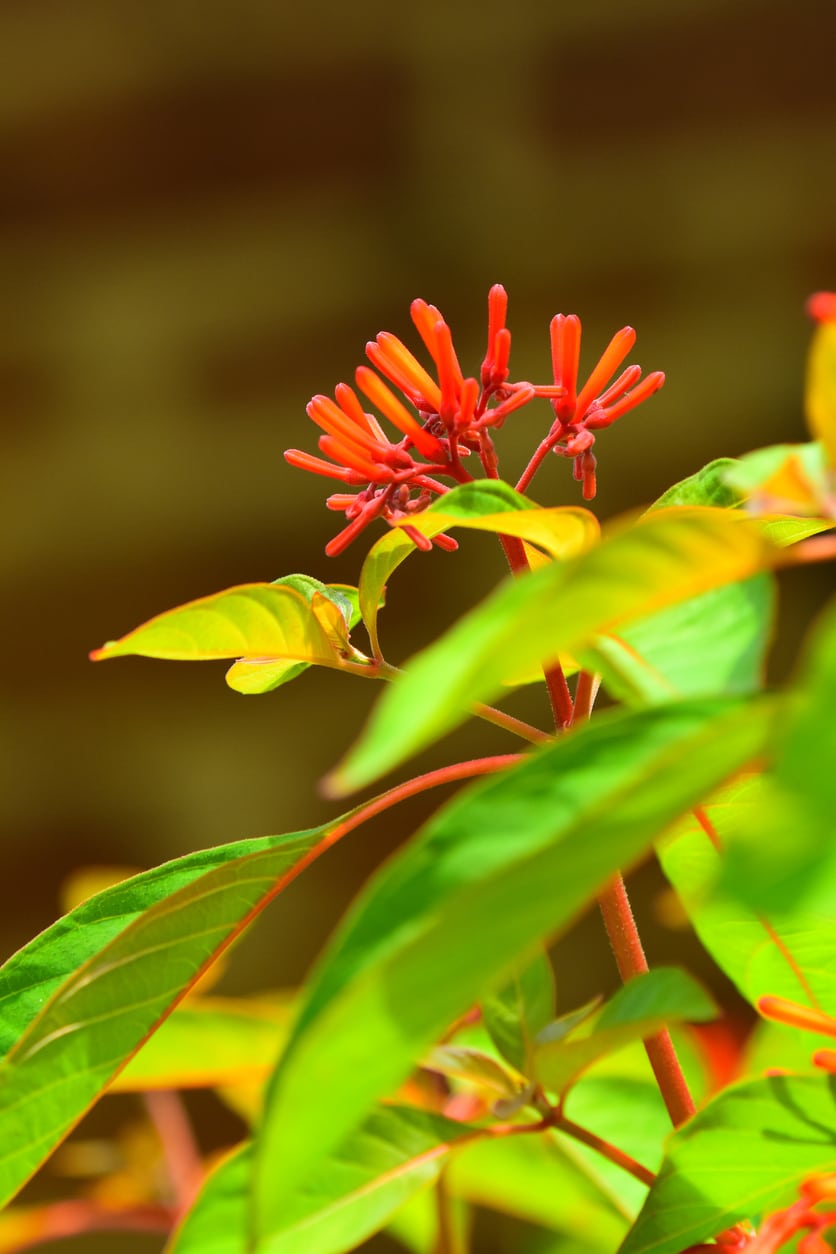Firebush Container Care: Can You Grow Firebush In A Pot


As its common names firebush , hummingbird bush, and firecracker bush imply, Hamelia patens puts on a spectacular display of orange to red clusters of tubular flowers that bloom from spring to fall. A lover of hot weather, firebush is native to the tropical regions of Southern Florida, Southern Texas, Central America, South America, and the West Indies, where it can grow as a semi-evergreen rather tall and wide. But what if you don’t live in these regions? Can you grow firebush in a pot instead? Yes, in cooler, non-tropical locations, firebush can be grown as an annual or container plant. Read on to learn some care tips for potted firebush plants.
Growing Firebush in a Container
In the landscape, the nectar laden blooms of firebush shrubs attract hummingbirds, butterflies, and other pollinators. When these blooms fade, the shrub produces glossy, red to black berries that attract a variety of songbirds. They are famed for being incredibly disease and pest free. Firebush shrubs also withstand the midsummer heat and drought that causes most landscape plants to conserve energy and wilt or dieback. In autumn, as temperatures begin to dip, the foliage of firebush reddens, putting on one last seasonal display. They are hardy in zones 8-11 but will dieback in winter in zones 8-9 or grow throughout winter in zones 10-11. However, if the roots are allowed to freeze in cooler climates, the plant will die. Even if you don’t have room for a large firebush in the landscape or don’t live in a region where firebush is hardy, you can still enjoy all the beautiful features it has to offer by growing potted firebush plants. Firebush shrubs will grow and bloom well in large pots with plenty of drainage holes and a well-draining potting mix. Their size can be controlled with frequent trimming and pruning, and they can even be shaped into miniature trees or other topiary shapes. Container grown firebush plants make a spectacular display, especially when paired with white or yellow annuals. Just remember that not all companion plants will withstand intense summer heat as well as firebush.
Caring Container Grown Firebush
Firebush plants can grow in full sun to nearly full shade. However, for the best display of blooms, it is recommended that firebush shrubs receive about 8 hours of sun each day. Though they are drought resistant when established in the landscape, potted firebush plants will need to be watered regularly. When plants begin to droop, water until all the soil is saturated. Generally, firebush shrubs are not heavy feeders. Their blooms may benefit from a spring feeding of bone meal, however. In containers, nutrients can be leached from the soil by frequent watering. Adding an all-purpose, slow release fertilizer, such as 8-8-8 or 10-10-10, can help potted firebush plants grow to their full potential.
Sign up for the Gardening Know How newsletter today and receive a free copy of our e-book "How to Grow Delicious Tomatoes".

Darcy is a former contributor to Gardening Know How. She is a professional landscape designer and gardening writer with experience in plant sales. An avid gardener, Darcy has a passion for sharing practical tips to help others grow.